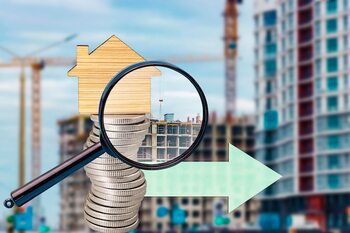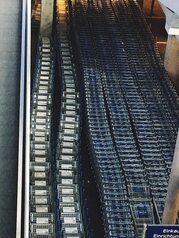The impact of neighborhood cohesion on home valuation

Neighborhood cohesion is more than just a simple concept; it is a determining factor in the valuation of your home. In Costa Rica, where community plays a fundamental role in quality of life, understanding how relationships between neighbors can influence the value of a property becomes essential. This article explores the links between community living and increased property value, demonstrating that investing in good relationships with your neighbors not only creates a harmonious environment but can also translate into long-term economic benefits.
What is neighborhood cohesion and why is it important?
Neighborhood cohesion refers to the quality of relationships and connections among members of a community. This concept encompasses trust, mutual support, and collaboration among neighbors, creating an environment where everyone feels part of the same social fabric. The importance of this cohesion lies in its ability to generate a sense of belonging and security, which directly influences overall satisfaction with the place where one lives. When people interact positively and help each other, a social network is established that not only strengthens interpersonal ties but also contributes to the emotional well-being of the residents.
In addition to its social and emotional benefits, neighborhood cohesion plays a crucial role in home valuation. Areas where neighbors know and collaborate with each other are often perceived as more attractive to potential buyers or renters. This can translate into higher real estate demand, which in turn raises property values in that area. The perception of safety, stability, and community support are factors that significantly influence purchasing decisions; therefore, investing time and effort in cultivating good relationships with neighbors not only improves immediate quality of life but also represents a smart strategy for increasing the long-term value of the home.
2. Emotional benefits of a good relationship with neighbors.
A good relationship with neighbors can generate a sense of belonging and security that directly impacts people's emotional well-being. When a positive bond is established with those living nearby, an environment is created where it is easier to share experiences, concerns, and support. This social support network not only improves quality of life but can also reduce levels of stress and anxiety, as knowing there are people willing to help in difficult times provides great peace of mind. A cohesive neighborhood fosters a warm and friendly atmosphere, contributing to greater personal and family satisfaction.
Additionally, positive interactions with neighbors can boost community participation in local activities, thereby strengthening the social fabric of the area. Events such as fairs, celebrations, or even informal gatherings create opportunities to get to know each other better and build lasting friendships. This type of cohesion leads to increased neighborhood watch and collective care of the shared space, which not only enhances the safety of the neighborhood but also improves the perception of the community as a whole. Consequently, a united neighborhood is not only emotionally enriching but also translates into an additional appeal for potential buyers, thereby raising property values within that area.
3. The influence of community support on property maintenance.
Community support acts as a fundamental pillar in the maintenance and enhancement of properties. When neighbors come together to care for and improve their surroundings, a sense of belonging is generated that not only beautifies the area but also increases its value. Collective projects such as cleaning public spaces, organizing gardening workshops, or creating committees for neighborhood care are clear examples of how an active community can positively influence the appearance and functionality of the place where they live. These initiatives promote a clean and safe environment, which is attractive to potential buyers and tenants.
Additionally, community support fosters a culture of shared responsibility that transcends individual boundaries. When neighbors engage in the maintenance of their properties and collaborate with one another, issues such as vandalism or structural deterioration are minimized. This collaboration not only reduces costs associated with expensive repairs but also creates a safer and more pleasant environment. In this context, well-kept and maintained properties tend to experience greater appreciation over time, making the investment in community relationships doubly beneficial: on one hand, it improves local quality of life; on the other, it ensures an increase in home value in the long term.
4. Community activities that increase home appreciation.
Community activities are an excellent way to strengthen neighborhood cohesion and, in turn, increase home value. Events like fairs, festivals, and cleanup days not only promote interaction among neighbors but also create a sense of belonging that can be attractive to future buyers. By participating in these activities, residents have the opportunity to get to know their neighbors better, which can result in a more united and safe community. An active community is perceived as a desirable place to live, which directly impacts property values.
Additionally, organizing workshops or community classes on topics such as sustainable gardening or home maintenance can further elevate the neighborhood's profile. These initiatives not only enrich collective knowledge but can also improve the area's aesthetics and functionality. A well-maintained and vibrant neighborhood is a magnet for those looking to acquire property. Active participation in these activities reflects a commitment to the common good, which is highly valued by potential buyers interested in investing in places that promote social and environmental development.
5. The role of local social networks in fostering neighborhood cohesion.
Local social networks have revolutionized the way communities interact and organize, providing accessible platforms for neighbors to share information, resources, and activities. Through online groups, residents can coordinate community events, exchange recommendations about local services, and even discuss relevant issues affecting their environment. This type of virtual interaction not only strengthens the bonds between neighbors but also fosters a sense of belonging and mutual support that is fundamental for neighborhood cohesion. When residents feel connected and committed to their community, they are more likely to actively participate in the care and maintenance of their neighborhood.
Additionally, local social media allows for greater visibility of community initiatives, which can attract new residents interested in being part of a collaborative environment. This interest in integrating into an active community can result in an increase in property values, as many people seek areas where social cohesion is evident. Thus, by promoting positive interactions among neighbors through digital platforms, a virtuous cycle is created: strong relationships generate an attractive living environment, which in turn positively impacts the valuation of properties within the area. The synergy between technology and community spirit is key to the sustainable and prosperous development of any neighborhood.
6. How a united community attracts potential buyers.
A united community not only improves the quality of life for its residents but also acts as a magnet for potential buyers. When neighbors know and support each other, they create a safe and welcoming environment that is attractive to those looking to settle in a new area. Positive interactions, such as community meetings or local events, foster a sense of belonging that can be crucial for those considering purchasing a property. Buyers often place a higher value on neighborhoods where social cohesion is evident, as this suggests stability and a greater likelihood of maintaining or increasing the value of their investments.
Additionally, a strong community can influence practical aspects that affect home values. For example, when neighbors work together to improve the neighborhood's infrastructure—such as community gardens, recreational areas, or cleaning activities—they contribute to creating a visually appealing and functional environment. These initiatives not only beautify the area but also promote safety and overall well-being. Thus, having an active and engaged community sets a positive precedent for future buyers: an area where investing is not only safe but also enriching in social and economic terms.
7. Success stories: neighborhoods with high cohesion and their impact on the real estate market.
Success stories in neighborhoods with high social cohesion demonstrate how a sense of community can radically transform the perception and value of properties. In various localities, developments that encourage neighborly interaction through shared spaces, community activities, and social events have been observed, leading to a significant increase in real estate market prices. Neighborhoods where residents know each other and are willing to collaborate for the common good tend to attract both buyers and investors, who value not only the quality of the homes but also the lifestyle offered by these united communities.
Additionally, neighborhood cohesion contributes to greater safety and maintenance of the environment, factors that are highly valued by those looking for a home. In areas where neighbors work together to keep their streets clean and safe, or where there is informal oversight among them, it is common to see an increase in property demand. These dynamics create a virtuous circle: by improving the quality of the neighborhood, its appeal in the real estate market rises, which directly benefits owners by increasing the value of their investments. Thus, cohesive communities not only enrich the daily lives of their residents but also become valuable assets from an economic perspective.
8. Strategies to improve neighborhood cohesion in your community.
To improve neighborhood cohesion in your community, it is essential to promote spaces for interaction and dialogue among residents. Organizing activities such as fairs, picnics, or sports meetings not only creates opportunities for people to get to know each other but also strengthens the sense of belonging and solidarity. These initiatives can include everything from a local market where neighbors can sell their products to community workshops that address relevant topics for everyone, such as environmental care or neighborhood safety. The more community members get involved, the greater the cohesion and mutual understanding will be, which in turn can contribute to an increase in property values.
Additionally, establishing effective communication channels is key to maintaining a good relationship among neighbors. Creating groups on social media or community apps allows sharing important information about local events, safety notices, or simply keeping up with neighborhood news. Through these platforms, neighbors can express their concerns and work together to solve common problems, which reinforces trust and mutual respect. At the end of the day, a united community not only improves the quality of life for its residents but also becomes an additional attraction for potential buyers looking for a place to live in peace and harmony.
9. The long-term vision: emotional and economic investment in cohesive neighborhoods.
Emotional and economic investment in cohesive neighborhoods is a key factor for property value growth. When neighbors actively engage in creating a friendly and safe environment, they are building a support network that not only enhances quality of life but also boosts the neighborhood's appeal. Neighborhoods with high levels of cohesion tend to exhibit lower crime rates, which in turn translates into higher demand from future buyers. This dynamic creates a virtuous circle where social stability elevates home value, making it a more solid investment.
Additionally, cohesive communities tend to develop joint initiatives, such as local events and community projects, that enrich the experience of living in the neighborhood. These activities not only generate stronger bonds among residents but also contribute to a positive perception of the area. Well-regarded neighborhoods are those where neighbors share common interests and values; this makes properties much more attractive to those looking to settle down long-term. Thus, investing time and effort in fostering solid relationships with neighbors is not only beneficial from an emotional standpoint but also represents a smart strategy to ensure a prosperous future in economic terms.



